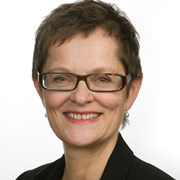This week marked the launch of SecurEL—a new centre financed by the Norwegian government through the Research Council of Norway’s Centres for Environment-friendly Energy Research programme. The Centre is led by SINTEF Energy Research and includes partners from multiple research institutions, power grid companies, technology providers, public authorities, and member organisations, as well as Norwegian system operator Statnett.
The power grid companies involved in the Centre account for three-quarters of Norway’s power supply.
The power grid is critical infrastructure
The power grid is a key enabler of climate goals, as it connects new renewable energy sources, such as solar and wind, with new electricity demand from sectors that are transitioning away from fossil fuels, like transportation and industry.
"This electrification introduces new pressures, including increased operational stress on power system components. Other challenges to the security of electricity supply are climate change, with more extreme weather events, cyber threats due to digitalisation, and increased geopolitical tensions," says Gerd Kjølle, Chief Scientist at SINTEF Energy Research and Director of SecurEL.
Ensuring a Secure Power Supply
Security of electricity supply refers to the power system’s ability to continuously deliver electrical power of the desired quality to the end user. This includes generating sufficient energy, maintaining adequate capacity to deliver power at all times, ensuring voltage quality, and minimising power outages.
Today, Norway has a high level of security of electricity supply, with an uptime of 99.98%. This corresponds to an average of 2-3 hours of power outages per year, mainly due to failures and planned disconnections in the grid. With sufficient energy availability, security of electricity supply is determined by the power grid and the operation of the power system.
"Ongoing changes put the power grid to the test, and we do not yet fully understand how they will impact security of electricity supply. The grid and its surrounding systems need resilient solutions to ensure continued electricity access and sufficient power for the green transition," Kjølle explains.
At SecurEL, research scientists and representatives from the power industry will develop new solutions to improve security of electricity supply and make the grid resilient to emerging challenges. Wear and tear on components, fault handling, and a shifting risk perception are also key topics that the Centre’s partners will work on in the years ahead.
The goal is to make the power grid resilient and capable of fully utilising its capacity, in a safe and sustainable manner.
A collaborative platform for the industry
“In a changing world, strengthening the power system’s security and resilience is more important than ever,” says Jun Elin Wiik, Director of the Norwegian Smart Grid Centre. “Achieving this requires research and collaboration across the entire value chain. We expect FME SecurEL to be a key meeting point where industry and research scientists come together for productive discussions about researching and developing much-needed solutions.”
The pilot projects are the main arena for collaboration between partners. These large-scale projects bring together multiple industry partners to address pressing challenges. The first three will concentrate on short-term priorities leading to 2030, including market flexibility utilisation, grid automation, and data sharing for better decision-making.
Facts
- SecurEL is an FME (Centre for Environment-friendly Energy Research) launched in 2025, running for eight years until 2033. The Centre builds on results from the former FME CINELDI.
- The FME scheme is managed by the Research Council of Norway, with funding from the Ministry of Energy. The Centre’s partners also contribute their own resources.
- SecurEL has 42 partners: seven research institutions, 13 Norwegian power grid companies, 18 technology providers, two member organisations, as well as Statnett and NVE-RME.
- SecurEL is led by SINTEF Energy Research.
Partners:
- Seven research institutions: SINTEF Energy Research, Norwegian University of Science and Technology (NTNU), Institute for Energy Technology (IFE), SINTEF Digital, University of South-Eastern Norway (UsN), Fridtjof Nansen Institute (FNI) and University of Cagliari
- 13 Norwegian power grid companies: Arva, BKK, Elinett, Elvia, Fagne, Glitre Nett, Lede, Linea, Linja, Lnett, Nettselskapet, Norgesnett and Tensio.
- Transmission system operator (TSO): Statnett SF
- 18 technology providers: ABB Electrification Norway, Aidon Norge, Avju Solutions, Embriq, Heimdall Power, Hitachi Energy Norway, Kongsberg Digital, Magtech, Møre Trafo, NODES, Norsk Transformator, Nortroll, Pixii, REN, Siemens, Snerpa Power, SolenergiFUSen and Smart Grid Services
- Two member organisations: Renewables Norway and The Norwegian Smart Grid Centre
- Public Authority: The Norwegian Energy Regulatory Authority (NVE-RME)


